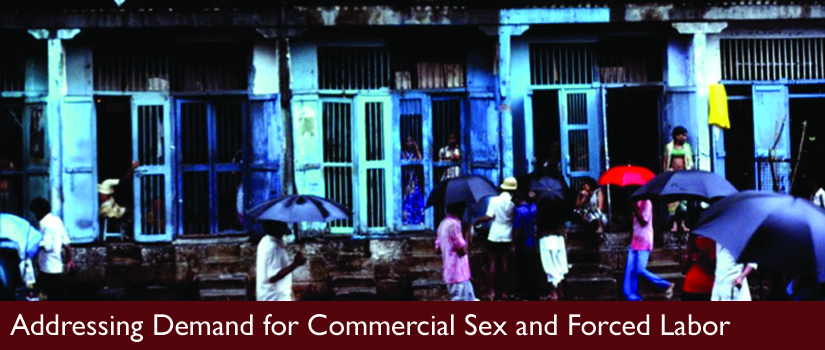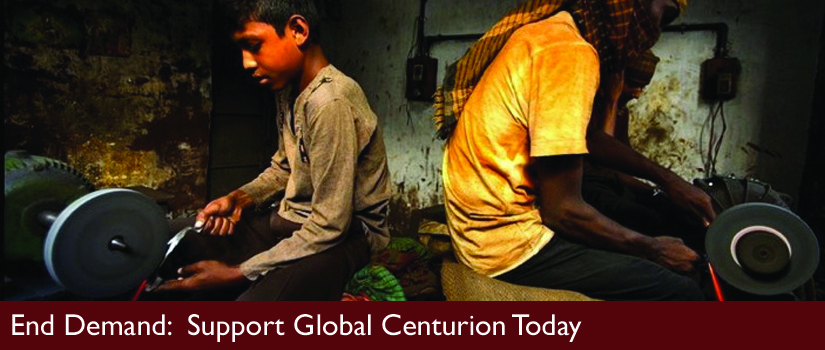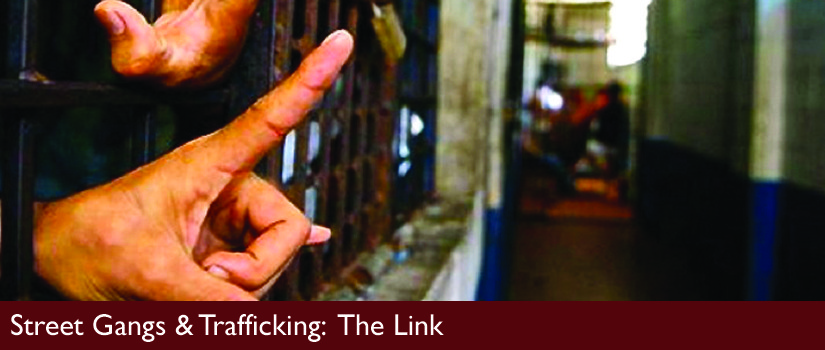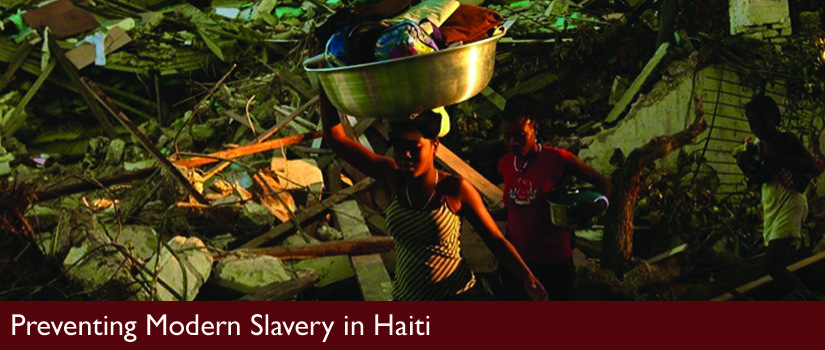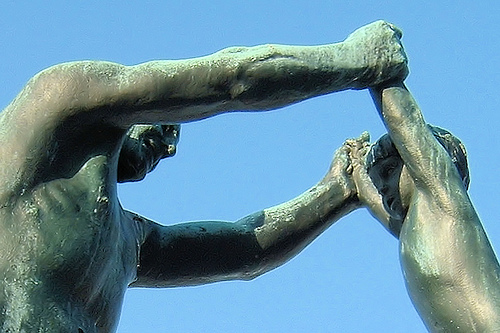10 Things Men and Boys Can Do to Stop Human Trafficking
December 28, 2012Comments are closed.
byJewel Woods. From Ms. Magazine’s Blog
Human trafficking is modern day slavery. It is the use of force, fraud, or coercion to compel another person to provide labor or commercial sex against their will, and it is one of the fastest growing criminal enterprises in the world.
The Renaissance Male Projectbelieves that men are complicit in this crime when they purchase sex because they create the demand by allowing others to exploit women and children for profit. Men must play a role in ending this form of modern-day slavery, a vicious industry that exploits and perpetuates the suffering of hundreds of thousands of women and children in the United States and around the world.
Based on a list of statistics that ThePolaris Projectcompiled:
- 27 million are enslaved globally.
- 14,50017,500 individuals are brought into the U.S. as human trafficking victimseach year.
- 1 million children enter the global commercial sex trade every year.
There are specific actions that men and boys can take to end these atrocities:
1. Challenge the glamorization of pimps in our culture
Mainstream culture has popularized the image of a pimp to the point that some men and boys look up to them as if they represent legitimate male role models, and they view pimping as a normal expression of masculinity. As Carrie Baker reflects in Jailing Girls for Mens Crimes in the SummerMs.issue, the glorification of prostitution is often rewarded, not punished, in pop culture:
Reebok awarded a multi-million-dollar contract for two shoe lines to rapper 50 Cent, whose album Get Rich or Die Tryin (with the hit single P.I.M.P.) went platinum. Rapper Snoop Dogg, who showed up at the 2003 MTV Video Music Awards with two women on dog leashes and who was described in the December 2006 cover ofRolling Stoneas Americas Most Lovable Pimp, has received endorsement deals from Orbit gum and Chrysler.
In reality, pimps play a central role in human trafficking androutinelyrape, beat and terrorizewomen and girls to keep them locked in prostitution.Men can take a stand against pimps and pimping by renouncing the pimp culture and the music that glorifies it.
2. Confront the belief that prostitution is a victimless crime
Many men view prostitution as a victimless crime. But it is not. For example, American women who are involved in prostitution are at agreater riskto be murdered than women in the general population. Research also shows that women involved in prostitution suffer tremendousphysical and mental traumaassociated with their work. Viewing prostitution as a victimless crime or something that women choose allows men to ignore the fact that theaverage ageof entry into prostitution in the U.S. is 12 to 14 and that the vast majority of women engaged in prostitution would like to get out but feel trapped.Men should stop viewing prostitution as a victimless crime and acknowledge the tremendous harm and suffering their participation in prostitution causes.
3. Stop patronizing strip clubs
When men think of human trafficking, they often think of brothels in countries outside of the U.S. However,strip clubsin this country as well asabroad may be a place where human trafficking victims go unnoticed or unidentified. Strip clubs are also places of manufactured pleasure where strippers are routinely sexually harassed and assaulted by owners, patrons and security personnel. Men rarely consider whether women working in strip clubs are coerced into that line of work, because to do so would conflict with the pleasure of participating in commercialized sex venues.Men can combat human trafficking by no longer patronizing strip clubs and by encouraging their friends and co-workers to do the same.
4. Dont consume pornography
Pornographyhas the power to manipulate male sexuality, popularize unhealthy attitudes towards sex and sexuality and eroticize violence against women. Pornography leads men and boys to believe that certain sexual acts are normal, when in fact sexual acts that are non-consensual, offensive and coupled with violent intent result in the pain, suffering and humiliation of women and children. In addition, adisproportionate amountof mainstream pornography sexualizes younger women with such titles as teens, barely 18, cheerleaders, etc. Targeting younger women socializes men to develop appetites for younger and younger women and creates a pedophiliac culture among men. Victims of human trafficking have also been forced into pornography.Men can stop the voyeurism of sex and sex acts that fuel human trafficking by refusing to consume pornography and encourage others to do the same.
5. Tackle male chauvinism and sexism online
Contrary to the myth that men do not gossip, men spend a significant amount of time online discussing their sexual exploits. The Internet provides many men with the ability to mask their identities while indulging inracist, sexist and violent diatribesagainst women and girls. Choosing to be a critical voice online is an extremely important way to educate and inform men and boys about their choices.Men can change this culture by starting threads in online forums that cause men to talk about their attitudes towards women and how these attitudes and behaviors are linked to human trafficking.
6. Endsex tourism
Men in the U.S. and other first world nations routinely travel overseas and have sex with women in developing countries. When men engage in these practices, they do not acknowledge the fact that many trafficked women and children come from developing countrieseven in countries where prostitution is legal. Traveling overseas grants men a great deal of anonymity.As men, we have a responsibility to confront the men that go overseas and participate in sex tourism.
7. Talk to men and boys about mens issues in male spaces
The only way to change men is by engaging spaces where men and boys talk and develop their ideas and attitudes towards sex and sexuality.Males spacessuch as barbershops, locker rooms, fraternities and union halls are the real classrooms where boys learn to become men and where men develop most of their ideas about how to interact with women. If men do not feel comfortable talking about these issues in male spaces, they can drop off informational brochures and make themselves available to talk with other men and boys when they have questions or concerns.As men, we need to turn male spaces into circles of accountability where men learn about non-violence, social justice and ending violence against women.
8. Support anti-human-trafficking policies
President Obama declared January 2010 asNational Slavery and Human Trafficking Prevention Month. However, more substantive legislation is required to end human trafficking. Men can educate themselves about the issues by visiting anti-trafficking organizations and by asking their elected officials what they have done to support or sponsor anti-human trafficking legislation.One of the most important acts men can do to stop human trafficking is to support anti-trafficking legislation at the local, state or federal level.
9. Support creation of John Schools
There would be no human trafficking if there were was no demand for it. Strategies aimed at ending human trafficking must focus on eliminating the demand. John Schools are education programs designed to educate customers apprehended by law enforcement who attempted to purchase sex. By teaching the legal and health effects of buying sex and the realities of prostitution, such schools impart knowledge that can reduce demand, making men conscious of how their actions can spur on human trafficking.Learn whether or not your local community has a John School. If not, encourage your local prosecutors office or city counsel to start one.
10. Raise sons and mentor boys to challenge oppression
No boy is destined to be a john, a pimp, or a human trafficker. Raising young men in circles of accountability to be respectful and protective of all women and children is one of the most important things men can do to stop human trafficking.Talk about human trafficking as a modern form of slavery to help convince men and boys to become allies in the fight to end this form of oppression.
Editors note: What do you think of these suggestions? Please comment and discuss!
This blog post is based on the Renaissance Male Projects informational brocure; if interested, contact the author through hiscontact webpage
Above: A sculpture in Vigeland Park in Oslo, Norway of a man holding a child. Photo courtesy of Flickr userQuistnix!//CC 2.0.


